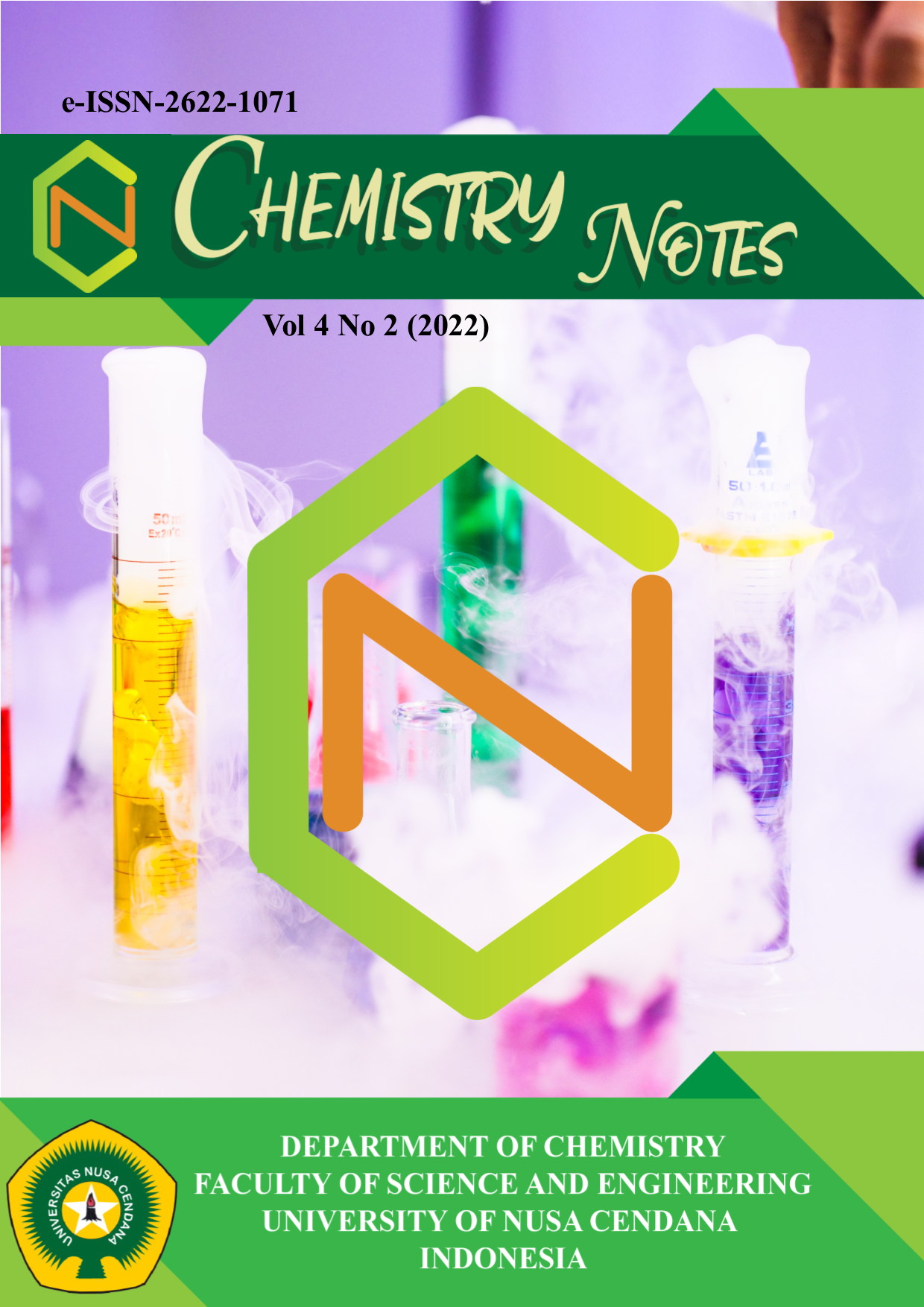Penurunan Kadar TSS Dan COD Limbah Cair Rumah Pemotongan Hewan Menggunakan Elektrolisis
Abstract
Research has been carried out on Reducing COD and TSS Levels of Slaughterhouse Liquid Waste Using the Electrolysis Method. This study aims to analyze the effect of electrolysis time and voltage (voltage) on the reduction of COD and TSS levels of RPH waste water using the electrolysis method. Electrolysis is the decomposition of electrolytes by direct electric current using two kinds of electrodes as conductors of electric current. The results showed that the longer the electrolysis time and the greater the voltage, the percentage of reduction in COD and TSS levels increased. The percentage reduction obtained was 31.43% COD and 95% TSS at 120 minutes of electrolysis time and 12 volts of voltage.
Downloads
References
2. Aini., Sriasih, M., & Kisworo, D. 2017. Studi Pendahuluan Cemaran Air Limbah Rumah Pemotongan Hewan di Kota Mataram. Jurnal Ilmu Lingkungan , 42-48
3. Handoko, T. I., Riyanto, & Julianto, T. S. 2014. Degradationof Lundry Waste Water By Electoysis Method Using Carbon Electrode. Indonesian Journal Of Chemical Research , 61-73.
4. Rahayu, D., & Jar, N. R. 2019. Penurunan Kadar COD, TSS, dan NH3-N pada Air Limbah Rumah Potong Hewan dengan Proses Biofilter Anaerob-Aerob menggunakan Media Bioball. Jurnal Purifikasi , 25-36.
5. Fauzi, N., Udyani, K., Zuchrillah, D. R., & Hosanah, F. 2019. Penggunaan Metode Elktrokoagulasi Menggunakan Elektroda Alumunium dan Besi Pada Pengolahan Air Limbah Batik. Seminar Nasional Inovasi dan Aplikasi di Industri , pp. 213-218.
6. Jehadut, K. F. R. 2021. Penurunan Kadar COD, TSS DAN pH limbah Cair Tahu Menggunakan Elektoda Al-C Metode elektrodegadasi. Kupang : Program Studi Kimia Universitas Nusa Cendana. 1-60: Skripsi .
7. Peraturan Menteri Lingkungan Hidup Republik Indonesia No. 5 Tahun 2014 Tentang Baku Mutu Air Limbah Rumah Pemotongan Hewan.
8. Hanif. 2022. Penurunan Kadar Pencemaran Pada Limbah Cair Rumah Pemotongan Hewan (RPH) Dengan Metode Elektrokoagulasi. Banda Aceh : Uniersitas Islam Negeri Ar-Raniry
9. Khandegar, V., dan Saroha, A. K. 2012. Electrochemical Treatment of Distillery Spent Wash Using Aluminum and Iron Eletrodes. Departement of Chemical Engineering, Indian Institute of Technology, Delhi Hauz Khas, New Delhi-1100016, India.
10. Hudha, M. I., Jimmy & Muyassaroh . 2014. Studi Penurunan COD Dan TSS Limbah Cair Industri Tahu Menggunakan Proses Elektrokimia. Surabaya : Jurusam FMIPA Universitas Negeri Surabaya.
11. Soemargono, I. E., dan Lazuardi. 2006. Pengolahan Limbah Rumah Tangga dengan Proses Elektrookulator Secara Batch. Jawa Timur : Jurusan Teknik Kimia UPN Veteran.
12. Suyata., Irmanto & Rastuti, U. 2015. Penerapan Metode Elektrokimia Untuk Penurunan Chemical Oxygen Demand (COD) Dan Total Suspended Solid (TSS) Limbah Cair Industri Tahu. Molekul. Vol.10, No.1 (17-81).
13. Nugroho, S. 2013. Elektrodegadasi Kadar Indigosol Golden Yellow Dalam Limbah Batik Dengan Elektroda Grafit. 1-70: Skripsi
14. Hamid, R. A., Purwono., dan Oktiawan, W. 2017. Penggunaan Metode Elektrolisis Menggunakan Elektroda Karbon Dengan Variasi Tegangan Listrik Dan Waktu Elektrolisis Dalam Penurunan Konsentrasi TSS Dan COD Pada Pengolahan Air Limbah Domestik. Jurnal Teknik Lingkungan , 1-18.
15. Mones, N. A. 2022. Elektrodegradasi COD (Chemical Oxigen Demand) Dan TSS (Total Suspended Solid) Dari Limbah Cair Tenun Ikat Dengan Menggunakan Elektroda Karbon Dan Elektrolit H2O2. Kupang : Program Studi Kimia Universitas Nusa Cendana. Skripsi.
16. Andewi, M. A. Y., dan Hadi, W. 2011. Produksi Gas Hidrogen Melalui Elektrolisis Air Sebagai Sumber Energi. Surabaya : Jurusan Teknik Lingkungan ITS.
17. SNI 06-6989.3-2004. Air Dan Air Limbah-Bagian 3: Cara Uji Padatan Tersuspensi Total (Total Suspended Solid, Tss) Secara Gravimetri.
18. SNI 06-6989-15-2004. Air Dan Air Limbah-Bagian 3: Penentuan Kadar COD (Chemical Oxygen Demand) Dengan Refluks Terbuka.
In order to publish in Chemistry Notes, authors are required to agree to the copyright permission stating that the authors give the publisher the right to reproduce, display or distribute the accepted manuscript. In this agreement the authors also automatically declare that the submitted manuscript is exempted from plagiarism issue and conflict of interest among the authors.

 Sherlly M. F. Ledoh(1*)
Sherlly M. F. Ledoh(1*)





